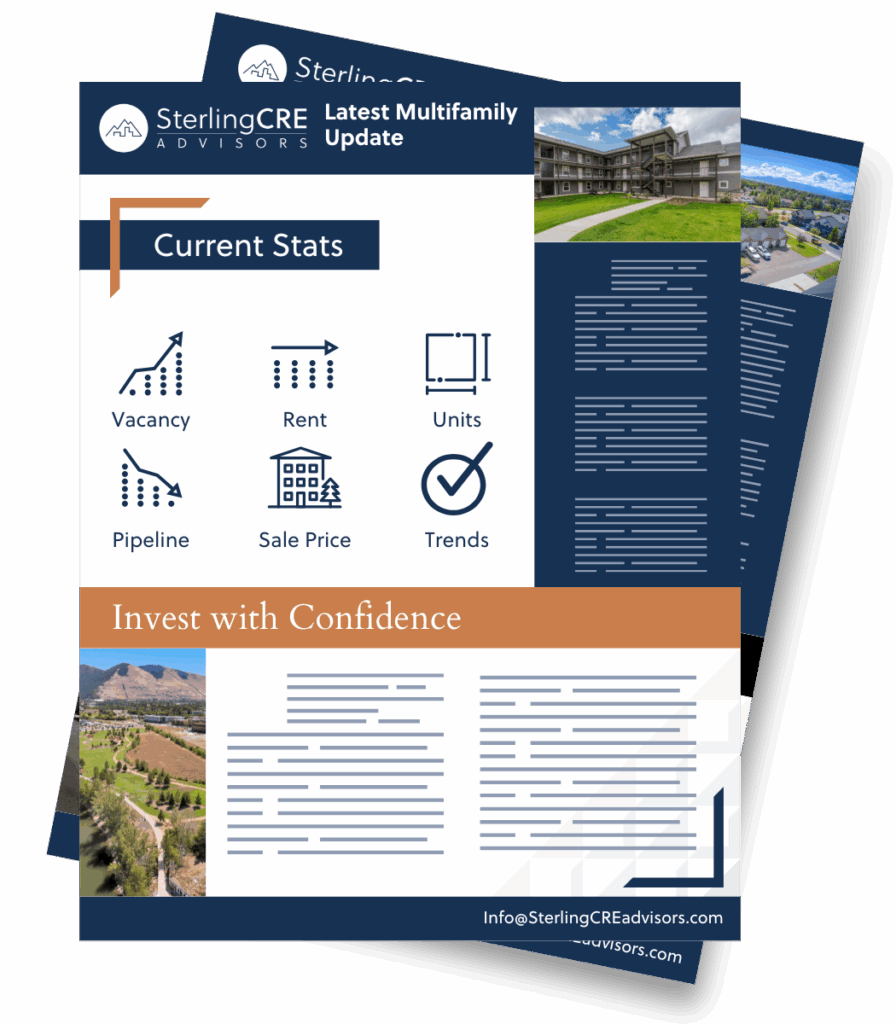Over the past nine months, the residential and commercial real estate sectors have experienced significant changes. Today, we’re diving into the factors behind the current economic conditions in Missoula and considering what’s happening in the national CRE markets.
Office spaces have been heavily impacted by the COVID-19 pandemic and the rise of hybrid work environments. Uncertainty surrounds office owners as landlords, lenders, and employers struggle to adapt to the changing landscape.
While larger markets like San Francisco, Portland, and Seattle are facing vacancy rates of over 20%, Missoula presents a different scenario. The year-end 2022 office vacancy rates in Missoula were below 5%, and lease rates have increased by over 8%.
However, there is a shift towards quality spaces in good locations, leading to some older office buildings losing tenants to newer, more attractive options. Upgrading or considering adaptive reuse concepts for aging office buildings is advisable.
Despite initial concerns, the retail sector has experienced a resurgence following the aftermath of COVID-19. While some big-box stores and fast-food franchises face challenges due to the rise of e-commerce and the need for brand refreshment, other retailers such as grocers and hardware stores are expanding and demanding more space.
Nationwide, retail vacancy rates dropped to around 10% in late 2022, and in Missoula, it plummeted to 3.43% while lease rates increased by 19%. However, the limited retail development pipeline in Missoula poses a challenge in accommodating more retailers at the moment.
The arrival of major industrial occupiers in Missoula has generated excitement. However, the lack of infrastructure on the western side of the city has posed challenges for industrial users. Industrial buildings require specific water systems and sprinkler installations, and without adequate municipal water supply, additional costly measures are necessary.
As a result, lease rates in Missoula’s industrial sector have risen by over 40%, purchase prices increased by 11%, and transaction volumes decreased due to the scarcity of available properties. Industrial vacancy rates in Missoula currently hover around 4%. The expansion of the development pipeline in the near future is expected to provide some relief.
Self-storage facilities have become popular among investors as a safe investment option. During COVID-19, self-storage occupancy increased due to the housing shortage and people needing temporary storage solutions. However, rent growth and occupancy rates have recently stabilized.
Acquiring self-storage properties requires careful timing, as owners may be reluctant to sell if the facility is performing well or if their children do not wish to take over the business.
The multifamily market in Missoula has been a topic of interest, with vacancy rates dropping below 1% in 2020, leading to significant rent increases. However, the development pipeline has expanded, with over 3,800 potential units in various stages of delivery, permitting, and planning.
As a result, the vacancy rate has risen to 2.91% in the first quarter of 2023, and it may reach 8-9% if all the planned units are delivered. Rent growth is expected to slow down as a result.
Investment transaction activity has been limited since the third quarter of 2022 due to interest rate hikes and uncertainties surrounding exit cap rates. Owners have experienced substantial cash flow growth, making it challenging to convince them to sell at current market conditions.
Consequently, there is a standoff between buyers and sellers, resulting in pricing that appeals mostly to exchange buyers. This situation is likely to persist in 2023 and potentially into 2024. However, as commercial debt matures and rent growth slows down, property owners may face difficulties if operating expenses haven’t been minimized.
This trend has already begun, but the real impact is expected to be felt in 2024. While a crash may not necessarily occur, there is uncertainty. Owners who purchased properties in 2014 or earlier are in a better position to sell, while those who bought after 2018 may face challenges as sellers. The gap between asking and bidding prices is likely to persist, resulting in a slowdown in deal flow but not a complete halt, particularly in markets like Missoula.



